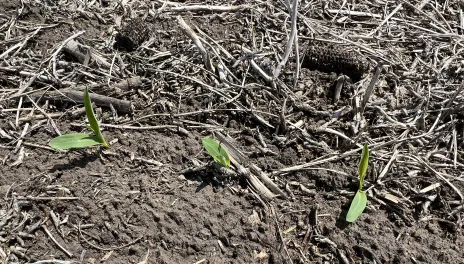Planting season is upon us
Planting season is upon us. From a crop insurance standpoint, spring barley and wheat (hard red and durum), corn, dry peas, and oats can be planted anywhere in the state as of April 28, but soybean and dry bean can’t be planted until May 1 in most of the state, but not until May 5 for most counties somewhat north of Highway 15. Sunflower can’t be planted until after May 6 or 11 in most of the state.
The optimum time for planting small grain crops is past for all areas of the state south of Highway 2, as of April 28. That doesn’t mean it is too late to plant small grain crop as of April 28, but for those areas south of Highway 2, research shows yield loss of 1.5 bushels per acre per day for spring wheat, 1.7 bushels per day for spring barley. Based upon crop insurance the last dates to plant a small grain crop is May 31 for most of the state or June 5 for areas north of Highway 15.
Even though corn can be planted anywhere in the state from a crop insurance standpoint, I recommend corn should not be planted yet in most of the state. Timely corn planting is critical to maximizing corn yields and you only get one chance to plant corn each spring to maximize corn yield, so based upon the current forecast, please be patient with corn planting. As of April 23, 2025 the average four-inch soil temperatures ranged from 39 degrees Fahrenheit near Grand Forks to 54 degrees Fahrenheit at Linton. Carrington’s four-inch soil temperature was 47 degrees Fahrenheit. Corn can begin germinating at an average soil temperature of 50 degrees Fahrenheit, but if the soil temperature stays near this minimum it may take up to 35 days to emerge. If the average daily soil temperature is 65 degrees Fahrenheit, which looks to be nearly impossible through the second week of May, corn can emerge within seven days. If corn emerges later than one and one-half weeks and non-uniformly, corn yields can be decreased by six to eight percent! Corn yield in North Dakota only decreases one percent per day after the optimum planting date of mid-May, so it is better to leave the corn in the bag rather than plant the corn at soil temperatures below 65 degrees Fahrenheit. Patience is a virtue when planting corn.
Ask your seed agronomist how deep to plant each corn hybrid as this can influence corn yield. Never plant corn less than one and one-half inch deep, otherwise nodal root development will not allow for maximum yield. In a Purdue research trial, maximum corn yield for one hybrid was at a planting depth of two inches while a maximum corn yield for a different hybrid was at a planting depth of two and one-half inches. Based upon this information, plant corn two to three inches deep.
Planting corn properly is critical to maximizing corn yield and profitability.
Jeff Stachler, Ph. D., CCA
Jeff.Stachler@ndsu.edu
Extension Cropping Systems Specialist
